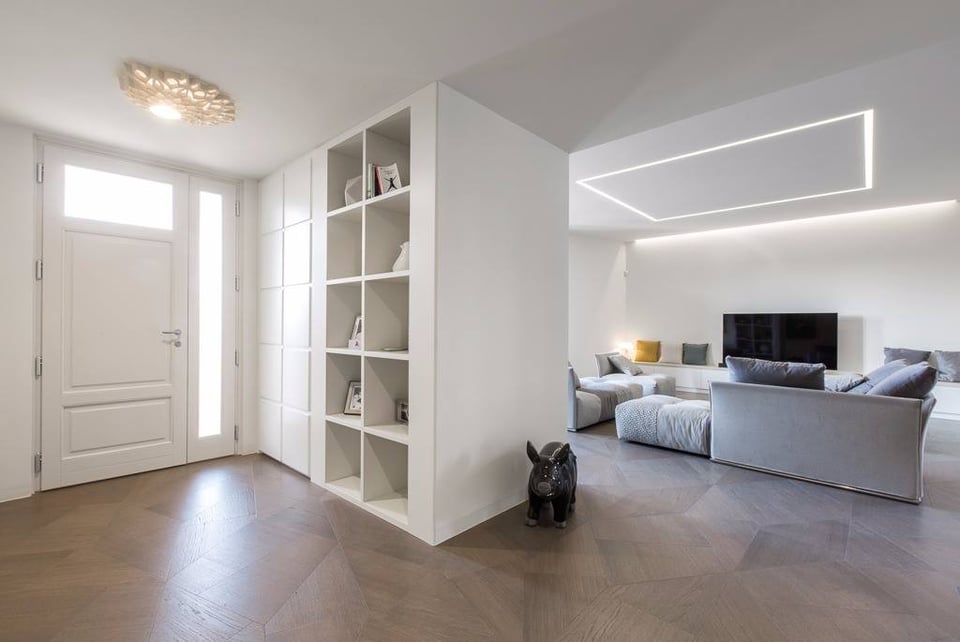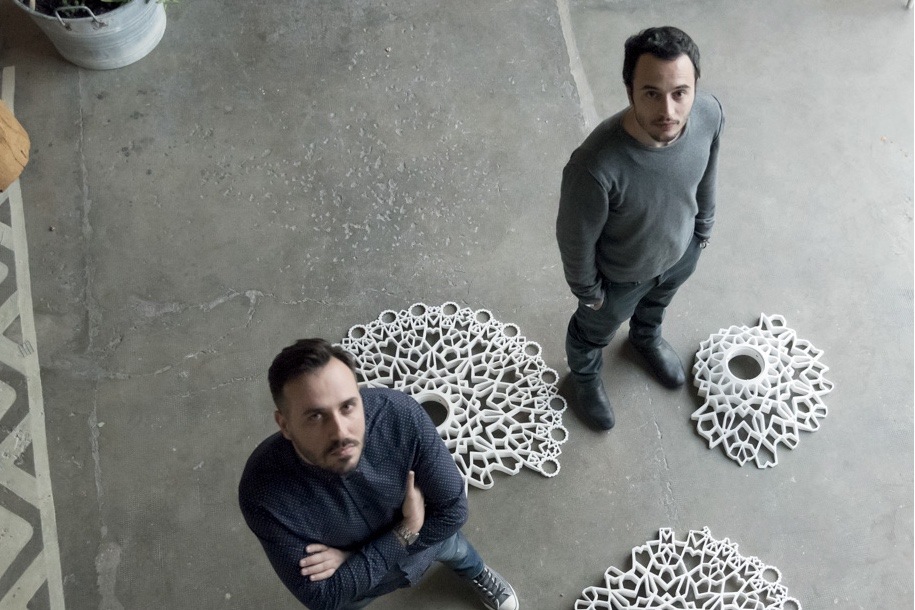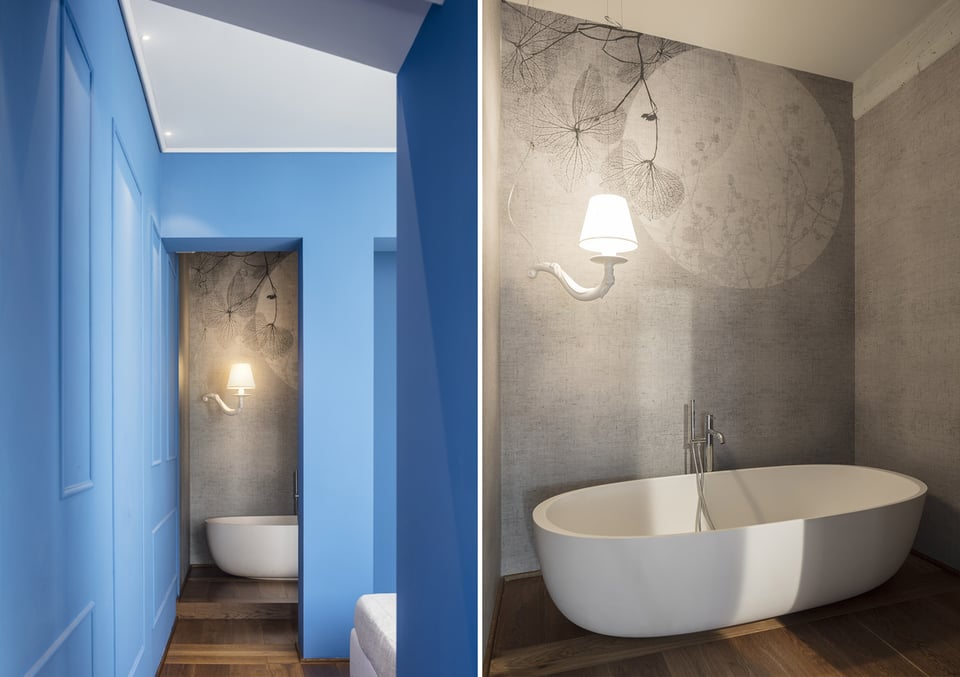Dario De Meo is a designer and Luca De Bona an architect: together they form the design studio Debonademeo which is active in various fields, from product design to interiors.
Their collaboration, which began when they met in Milan, after periods spent working in different countries around the world, sees them on a shared path, a "real and also mental journey through places, time, language arts, and expressiveness, capable of mixing functions and emotions". With their good grounding in theory and significant historical culture, De Bona and De Meo do not forget tradition, but they still innovate, using technology to stimulate the senses and emotions of the people who live in the spaces and use the objects. We talked to them about lighting technology, to better understand how customer needs can be combined with the designer's creativity, and asked a question about their most successful Karman lamp.

Notredame
How do you approach a lighting project and what are the key steps for a successful project?
"Whether it is a private home or a public place such as a shop or a restaurant, every interior design project not only has to deal with technicalities but also with emotions. Good practice requires an inspection of the space in order to really get to know it, not only through plans or renderings, but to experience it, whether empty or already furnished. It is necessary to assess its technical characteristics, surfaces, and atmosphere, but also daylight, and to imagine how it can be artificially lit when the sun goes down. Then there is a phase with more technical analyses, taking into account the functions of the place, perhaps the need to guarantee different values in areas dedicated to work or reading as opposed to those for stopping or passing through, without forgetting specific national or European regulations, especially in the public sphere. Last but not least, there is the aesthetic aspect of the matter and compliance with the architectural and interior concept: the language of lighting design must ensure consistency. Different types of products are needed, technical solutions for working areas, accent lighting to emphasise corners or special objects, and decorative products to match the style and furnishings. It is always important to bear in mind that light influences the interpretation of interiors; you can make everything “flatter” or more magical by playing with shadows; you can warm or cool a space with sources that use different colour temperatures".

What are the customer requirements for a lighting project?
"We notice that the demands change in Italy and abroad. In our country we are asked for abundant light. Customers are often convinced that by lighting more, rooms are perceived better, details are appreciated and the eyes are not fatigued. This happens especially for lighting in retail or shops; I am thinking of hairdressing salons that are generally over-lit. Abroad, especially in Northern Europe, light is considered something precious and ancestral, so even artificial light is used more sparingly, to give value to moments related to family, work, shopping and sharing. These are social and anthropology-related aspects. There are also differences of between customer and designer vision on how to apply individual products: on the more technical ones, installation is obviously linked to correct use, and there are always great discussions on decorative lamps. For example, pendant lighting over a table: customers tend to want to place them very high, whereas we technicians know that the appropriate distance from the worktop would be 80-90 centimetres.
How do you manage to combine customer requirements with your creativity and the need to ensure quality lighting in terms of quality and quantity?
"Apart from compliance with standards and regulations, good lighting conditions the experience people have in rooms, as well as the emotions they feel. The guest or homeowner has no idea how light fixtures work, or about flow calculations or other technicalities; they simply experience light unconsciously and, if the lighting is well done, t is able to convey positive feelings on a deep level, to generate a pleasant memory. We try to guide those who rely on us by emphasising how three fundamental aspects of light must be in balance. Lighting needs to be functional, i.e. to enable people to see well and perform actions safely; it must promote holistic well-being; it must ensure the correct perception of colours, materials and fit well into its setting”.

How do you communicate with the customer?
"There are programmes and calculation tools that allow one to empirically define the amount of light required and provide precise data from which to start. However, in our opinion, light is only an “exact science” as long as you analyse it from the point of view of quantity; you have to switch it on to really see how it relates to the environment. With the customer we try to establish a relationship of trust. If they have chosen to trust us, they need to think that we can also handle the lighting part. We try to make people understand that light is a ductile material, that it adapts to spaces, and that it also “adjusts” according to changing needs. The end result is often a compromise between general lighting and specific accent requests or wishes of people”.
You are also a product designer. How do you manage to combine aesthetics and functionality in this area?
"Decorative products, especially those by Karman, which have a well-defined character and style, must fulfil their function as light, but also dialogue harmoniously with their context. They must be beautiful when switched off and they must strike, if not move, the beholder. One must respect the DNA of the company and fit into a catalogue that has its own consistency, making proposals that the brand's public and customers can recognise and appreciate. It usually starts from a request that comes from the company, from a design challenge that probably responds to market demands, whether a precise type such as ceiling lamp, floor lamp, or suspension, the use of a given material, or the need to make an object for indoors or outdoors. We try to mix the brief with our personal research, which looks at art and anthropology, and we try to focus on a main area of use, which can be contract or residential. We draw the shape of the object and then add the function, trying to make it into a kind of 'light sculpture''.

Alì e Babà
Let's take a practical example and focus on Notredame, one of Karman's best-selling and most popular pieces...
"Notredame is a product that is several years old; it has become an icon both because of its aesthetics and because it is very recognisable. As we said before, we follow very precise rules in designing; when we approach the design of a product, we must also make sure that the new object is consistent with the rest of the catalogue. In Karman's case, it should not only fulfil its function of illuminating, but also have something more, let's say its own personality and a strong stylistic content. In this case, the company asked us for a lamp that would redefine the concept of a ceiling light. We started by wondering how light enters through a skylight: if the ceiling light gives zenithal light, the reference could have been an opening in the roof or, at a higher level, the glass panes of Gothic cathedrals and rose windows. We discovered that the rose window theme was common to many cultures: light is mystical even in mosques and we thought of adapting this effect to the domestic dimension, thinking of a lamp that would become one with the ceiling or walls. We superimposed ceiling roses from various epochs and countries, even mandalas, creating layers to obtain the final design, then transforming it into a three-dimensional object".





